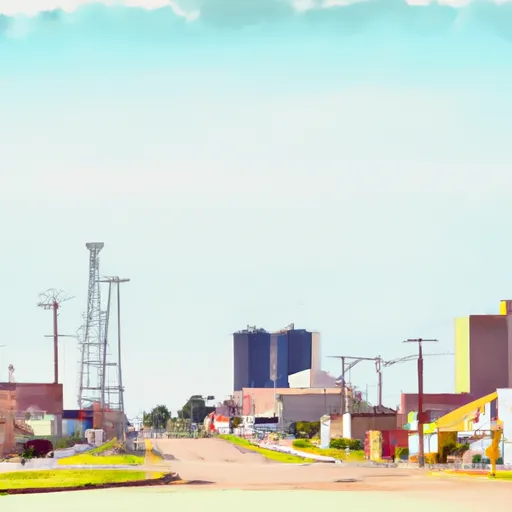-
 Snoflo Premium
Snoflo Premium
Get unlimited access to all our content
With no Ad interruptions! - Start Your Free Trial Login with existing account
Mutual
Eden Index
Climate
8.1
•
Recreation
•
Community
1.0
•
Safeguard
3.5/10

Mutual, Oklahoma is a small town located in the southern part of the state. The town experiences a humid subtropical climate, characterized by hot summers and mild winters. Summers are typically hot and humid, with temperatures often reaching the mid-90s Fahrenheit (35-37 degrees Celsius). Winters are mild, with temperatures ranging from the mid-30s to the mid-50s Fahrenheit (1-14 degrees Celsius). Precipitation is spread fairly evenly throughout the year, with an average annual rainfall of around 35 inches (89 cm).
In terms of hydrology constituents, Mutual is not situated near any major bodies of water. However, there are several small creeks and ponds in the surrounding area, providing opportunities for fishing and boating. The region is also known for its underground water sources and wells, which contribute to the local water supply.
As for outdoor recreation, Mutual offers various opportunities for nature enthusiasts. The town is surrounded by picturesque landscapes, making it a popular destination for hiking and camping. The nearby Gloss Mountains State Park provides scenic trails, amazing rock formations, and stunning views of the surrounding area. Additionally, Mutual is within driving distance of Great Salt Plains State Park, which is famous for its unique salt flats and offers activities such as birdwatching, fishing, and digging for hourglass selenite crystals.
What is the Eden Index?
The Snoflo Eden Index serves as a comprehensive rating system for regions, evaluating their desirability through a holistic assessment of climate health, outdoor recreation opportunities, and natural disaster risk, acknowledging the profound impact of these factors on livability and well-being.
Climate Health Indicator (CHI): 8.1
Mutual receives approximately
657mm of rain per year,
with humidity levels near 81%
and air temperatures averaging around
15°C.
Mutual has a plant hardyness factor of
6, meaning
plants and agriculture in this region thrive during a short period during spring and early summer. Most
plants will die off during the colder winter months.
By considering the ideal temperature range, reliable water supplies, clean air, and stable seasonal rain or snowpacks, the Climate Health Indicator (CHI) underscores the significance of a healthy climate as the foundation for quality living.
A healthy climate is paramount for ensuring a high quality of life and livability in a region, fostering both physical well-being and environmental harmony. This can be characterized by ideal temperatures, reliable access to water supplies, clean air, and consistent seasonal rain or snowpacks.
Weather Forecast
Streamflow Conditions
Lower North Canadian
Area Rivers
Lower North Canadian
Snowpack Depths
Lower North Canadian
Reservoir Storage Capacity
Lower North Canadian
Groundwater Levels
Recreational Opportunity Index (ROI):
The Recreational Opportunity Index (ROI) recognizes the value of outdoor recreational options, such as parks, hiking trails, camping sites, and fishing spots, while acknowledging that climate plays a pivotal role in ensuring the comfort and consistency of these experiences.
Access to outdoor recreational opportunities, encompassing activities such as parks, hiking, camping, and fishing, is crucial for overall well-being, and the climate plays a pivotal role in enabling and enhancing these experiences, ensuring that individuals can engage in nature-based activities comfortably and consistently.
Camping Areas
| Campground | Campsites | Reservations | Toilets | Showers | Elevation |
|---|---|---|---|---|---|
| Cordell Park | None | 1,530 ft | |||
| Foss State Park | None | 1,705 ft | |||
| Hobart Lions Club RV Park | 8 | 1,546 ft | |||
| Boiling Springs State Park | None | 1,876 ft | |||
| Alabaster Caverns State Park | None | 1,726 ft |
Nearby Ski Areas
Catastrophe Safeguard Index (CSI):
The Catastrophe Safeguard Index (CSI) recognizes that natural disaster risk, encompassing floods, fires, hurricanes, and tornadoes, can drastically affect safety and the overall appeal of an area.
The level of natural disaster risk in a region significantly affects safety and the overall livability, with climate change amplifying these risks by potentially increasing the frequency and intensity of events like floods, fires, hurricanes, and tornadoes, thereby posing substantial challenges to community resilience and well-being.
Community Resilience Indicator (CRI): 1.0
The Community Resilience Indicator (CRI) recognizes that education, healthcare, and socioeconomics are crucial to the well-being of a region. The CRI acknowledges the profound impact of these elements on residents' overall quality of life. By evaluating educational resources, healthcare accessibility, and economic inclusivity, the index captures the essential aspects that contribute to a thriving community, fostering resident satisfaction, equity, and social cohesion.

